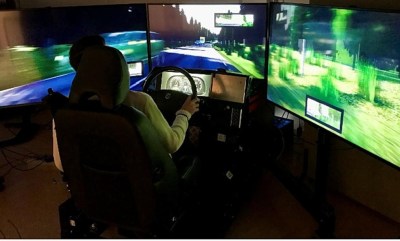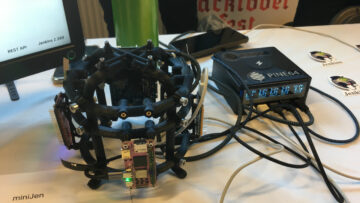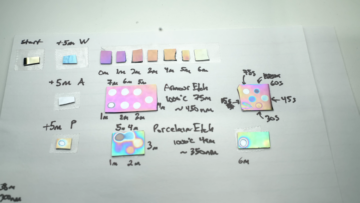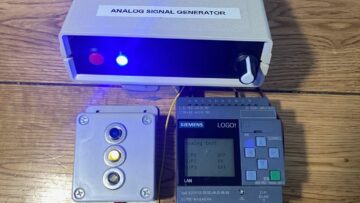There are many benefits to learning to fly an airplane, drive a racing car, or operate some complex piece of machinery. Ideally, you’d do so in a perfectly safe environment, even when the instructor decides to flip on a number of disaster options and you find your method of transportation careening towards the ground, or the refinery column you’re monitoring indicating that it’s mere seconds away from going critical and wiping out itself and half the refinery with it.
Still, we send inexperienced drivers in cars onto the roads each day as they either work towards getting their driving license, or have passed their driving exam and are working towards gaining experience. It is this inexperience with dangerous situations and tendency to underestimate them which is among the primary factors why new teenage drivers are much more likely to end up in crashes, with the 16-19 age group having a fatal crash nearly three times as high as drivers aged 20 and up.
After an initial surge in car driving simulators being used for students during the 1950s and 1960s, it now appears that we might see them return in a modern format.
Learn Or Die
Teenage motor vehicle crash deaths by sex, 1975-2021 (Source: IIHS)
” data-medium-file=”https://platoaistream.net/wp-content/uploads/2024/02/car-driving-simulators-for-students-or-when-simulators-make-sense.png” data-large-file=”https://platoaistream.net/wp-content/uploads/2024/02/car-driving-simulators-for-students-or-when-simulators-make-sense-1.png?w=653″ class=”size-medium wp-image-664419″ src=”https://platoaistream.net/wp-content/uploads/2024/02/car-driving-simulators-for-students-or-when-simulators-make-sense.png” alt=”Teenage motor vehicle crash deaths by sex, 1975-2021 (Source: IIHS)” width=”400″ height=”289″ srcset=”https://platoaistream.net/wp-content/uploads/2024/02/car-driving-simulators-for-students-or-when-simulators-make-sense-1.png 653w, https://platoaistream.net/wp-content/uploads/2024/02/car-driving-simulators-for-students-or-when-simulators-make-sense-1.png?resize=250,181 250w, https://platoaistream.net/wp-content/uploads/2024/02/car-driving-simulators-for-students-or-when-simulators-make-sense-1.png?resize=400,289 400w” sizes=”(max-width: 400px) 100vw, 400px”>
As with many things, there is a big difference between knowing how to operate a vehicle and being capable of dealing with unexpected situations that may occur. Yet even when operating a car in regular traffic there are already many situations that require both knowledge and skill, such as navigating through narrow city streets or hurtling oneself into highway traffic at 120 km/h. While the former is usually done at lower speeds and mistakes generally aren’t fatal, the latter is very much unforgiving, even before considering overtaking other traffic and recognizing dangerous situations like getting too close behind a truck.
In 2020, among US teenagers motor vehicle crashes was the leading cause of death, surpassing both homicide and suicide, even if teenage motor vehicle crash deaths have declined significantly since the 1970s. It was incidentally this increase in teenage car crash deaths starting in the 1950s which prompted the introduction of car driving simulators. Of particular note here is the Drivotrainer, developed by Aetna, which as an insurance company had a financial incentive to promote road safety. The result was a range of simulators, with the Drivotrainer and its siblings using prerecorded film reels for the audiovisual element, and so-called ‘Aetnacars’ which the students sat in to provide them with the tactile experience of a real automobile.
For a long time, the Drivotrainer was considered to be the best way to get students to familiarize themselves with the controls and operating of a car before even getting behind the steering wheel of a real car and setting off into traffic. A demonstration of this can be found in the following 1967 British Pathé video:
[embedded content]
Simulated Experiences Are Real
The motion base simulator was used by all 135 space shuttle crews to train for their missions between 1981 and 2011. (Image credit: collectSPACE.com)
” data-medium-file=”https://platoaistream.net/wp-content/uploads/2024/02/car-driving-simulators-for-students-or-when-simulators-make-sense.jpg” data-large-file=”https://platoaistream.net/wp-content/uploads/2024/02/car-driving-simulators-for-students-or-when-simulators-make-sense-3.jpg?w=800″ class=”size-medium wp-image-664422″ src=”https://platoaistream.net/wp-content/uploads/2024/02/car-driving-simulators-for-students-or-when-simulators-make-sense.jpg” alt=”The motion base simulator was used by all 135 space shuttle crews to train for their missions between 1981 and 2011. (Image credit: collectSPACE.com)” width=”400″ height=”266″ srcset=”https://platoaistream.net/wp-content/uploads/2024/02/car-driving-simulators-for-students-or-when-simulators-make-sense-3.jpg 970w, https://platoaistream.net/wp-content/uploads/2024/02/car-driving-simulators-for-students-or-when-simulators-make-sense-3.jpg?resize=250,166 250w, https://platoaistream.net/wp-content/uploads/2024/02/car-driving-simulators-for-students-or-when-simulators-make-sense-3.jpg?resize=400,266 400w, https://platoaistream.net/wp-content/uploads/2024/02/car-driving-simulators-for-students-or-when-simulators-make-sense-3.jpg?resize=800,532 800w” sizes=”(max-width: 400px) 100vw, 400px”>
There are many fields where the use of a simulator is an essential part, whether it’s an electronic device or a physical approximation like the pools used to train astronauts to deal with performing operations in zero gravity. The Space Shuttle had its own simulators, as do commercial jetliners, with simulator time counting towards the total flight time of airline pilots.
In the case of the Space Shuttle, there were three simulators, with the most impressive simulator probably the Motion Base Simulator as it resides on a fully articulated base (hence the name), to provide full haptic feedback as if the astronauts were truly undergoing the mission. This particular simulator can now be found at the Lone Star Flight Museum, along with many other examples of training and simulation equipment that astronauts used over the decades to prepare for missions on the real Space Shuttle.
Baltic Aviation Academy Airbus B737 Full Flight Simulator (FFS) in Vilnius (Credit: Baltic Aviation Academy)
” data-medium-file=”https://platoaistream.net/wp-content/uploads/2024/02/car-driving-simulators-for-students-or-when-simulators-make-sense-1.jpg” data-large-file=”https://platoaistream.net/wp-content/uploads/2024/02/car-driving-simulators-for-students-or-when-simulators-make-sense-6.jpg?w=800″ class=”size-medium wp-image-664423″ src=”https://platoaistream.net/wp-content/uploads/2024/02/car-driving-simulators-for-students-or-when-simulators-make-sense-1.jpg” alt=”Baltic Aviation Academy Airbus B737 Full Flight Simulator (FFS) in Vilnius (Credit: Baltic Aviation Academy)” width=”400″ height=”267″ srcset=”https://platoaistream.net/wp-content/uploads/2024/02/car-driving-simulators-for-students-or-when-simulators-make-sense-6.jpg 800w, https://platoaistream.net/wp-content/uploads/2024/02/car-driving-simulators-for-students-or-when-simulators-make-sense-6.jpg?resize=250,167 250w, https://platoaistream.net/wp-content/uploads/2024/02/car-driving-simulators-for-students-or-when-simulators-make-sense-6.jpg?resize=400,267 400w” sizes=”(max-width: 400px) 100vw, 400px”>
Back on Earth, there are literally countless examples of how simulators are an essential part practically everywhere, ranging from the military to industry and of course aviation. Some of us are probably already familiar with the full flight simulators (FFS) that are now part and parcel of any commercial jetliner’s development, training and maintenance programs, as well as the occasional use by the NTSB to simulate certain conditions.
These flight simulators – when certified by the relevant authority – can be used for pilot training, which can include a rookie pilot getting their first lessons and familiarizing themselves with checklists and the basics of flying, navigating and communicating, as well as for experienced pilots to get rated for a new aircraft type, such as when switching from a 737-class airplane to a 787 or Airbus A320. Depending on how advanced the flight simulator is, they can be used for engineering tasks, or even as part of the airplane design process. These days it’s become quite simple to set up a home flight simulator, along with countless other types of simulators, making it both extremely common and very versatile.
The benefits of these simulators should be obvious, as they allow for pilots, drivers and other crew to go through the routines, while being exposed to the widest possible array of situations and emergencies, all without ever risking a real aircraft, space shuttle, or Formula One car. All of which serves to reinforce the dissonance when we look at student car drivers and consider how woefully unprepared they are.
Car Simulators In 2024

These days, a car driving simulator can consist out of little more than a computer with a decent graphics card plus some displays and the car controls like the steering wheel and pedals. This makes it both a very affordable setup for a driving school, and a highly interactive experience for a student. Questions still remain about the practical uses for such a driving simulator when it comes to teaching students how to drive a car, or filtering out those students who are prone to risky driving.
This is the gist of a recent Swedish study performed by B. Thorslund et al. which was published in the January 2024 issue of Accident Analysis & Prevention. In it, they used a simulator setup as described earlier and pictured here, with a static base and automatic transmission. A group of 70 students were tasked with completing a range of scenarios on which they would be judged, along with a questionnaire that would occasionally pop up to ask them what they thought of their own performance.
What was astounding about the results is that no fewer than 43 out of 70 failed the screening test, while 41 of them passed the subsequent on-road driving test. Of these 41, 71% had previously failed the screening test on the simulator, with of note being that the on-road driving test did not involve many of the scenarios seen with the simulated experience. Meanwhile of the 26 who passed the screening test, 14 would fail the on-road driving test, but for reasons which were not part of the simulator experience, namely level 1 of the GDE matrix, being ‘vehicle control and maneuvering’. Something isn’t carrying over correctly.
Coming To A Driving School Near You?
The major question of whether driving simulators could be useful for driving students would seem to be answered at this point. Unlike the 1950s-era technology with film projectors and a rather limited simulator experience, 21st century simulators are about as close to the real thing without growing wheels and driving off. With thousands of US teens dying on the roads each year, and the rate increasing again since 2019, it could be the ideal teaching tool for students to learn the hazards of the road, and the correct responses.
While this is unlikely to resolve all of the risk factors which the CDC addresses – like seat belt use, speeding and driving while intoxicated – many crashes can be prevented by well-trained reflexes from hours of simulator training. The scenarios used by Thorslund et al. are a good example of just how many different situations can suddenly pop up, ranging from slippery roads, a car suddenly pulling onto the road, to a child running in front of the car out of one’s blind spot. These are all things which you want to run through not just in a theoretical exam, nor while driving a real car, but in a driving simulator, where if you do careen off the iced-over road you can just reset the simulation and try again.
- SEO Powered Content & PR Distribution. Get Amplified Today.
- PlatoData.Network Vertical Generative Ai. Empower Yourself. Access Here.
- PlatoAiStream. Web3 Intelligence. Knowledge Amplified. Access Here.
- PlatoESG. Carbon, CleanTech, Energy, Environment, Solar, Waste Management. Access Here.
- PlatoHealth. Biotech and Clinical Trials Intelligence. Access Here.
- Source: https://hackaday.com/2024/02/21/car-driving-simulators-for-students-or-when-simulators-make-sense/
- :is
- :not
- :where
- $UP
- 1
- 120
- 135
- 14
- 167
- 20
- 2011
- 2019
- 2020
- 2024
- 21st
- 26
- 400
- 41
- 70
- 800
- 970
- a
- About
- Academy
- advanced
- affordable
- again
- age
- aged
- Airbus
- aircraft
- airline
- Airplane
- AL
- All
- allow
- along
- already
- among
- among us
- an
- analysis
- and
- any
- appears
- ARE
- Array
- articulated
- AS
- ask
- astounding
- At
- authority
- Automatic
- automobile
- aviation
- away
- b
- base
- Basics
- BE
- become
- before
- behind
- being
- benefits
- BEST
- between
- Big
- blind
- both
- British
- but
- by
- CAN
- capable
- car
- card
- carrying
- cars
- case
- Cause
- CDC
- Century
- certain
- Certified
- child
- City
- Close
- Column
- COM
- comes
- commercial
- Common
- communicating
- company
- completing
- complex
- computer
- conditions
- Consider
- considered
- considering
- consist
- content
- control
- controls
- correct
- correctly
- could
- counting
- countless
- course
- Crash
- credit
- crew
- critical
- Dangerous
- day
- Days
- deal
- dealing
- deaths
- decades
- Depending
- described
- Design
- design process
- developed
- Development
- device
- DID
- difference
- different
- disaster
- displays
- do
- done
- drive
- drivers
- driving
- during
- Dying
- E&T
- each
- Earlier
- earth
- either
- Electronic
- element
- embedded
- end
- Engineering
- Environment
- equipment
- essential
- Ether (ETH)
- Even
- EVER
- everywhere
- exam
- example
- examples
- experience
- experienced
- Experiences
- exposed
- extremely
- factors
- FAIL
- Failed
- familiar
- familiarize
- feedback
- fewer
- Fields
- Film
- filtering
- financial
- Find
- First
- flight
- Flip
- flying
- following
- For
- format
- Former
- formula
- formula one
- found
- from
- front
- full
- fully
- gaining
- generally
- get
- getting
- Go
- going
- good
- graphics
- gravity
- Ground
- Group
- Growing
- had
- Half
- haptic
- Have
- having
- hence
- here
- High
- highly
- Highway
- Home
- HOURS
- How
- How To
- HTML
- HTTPS
- ideal
- ideally
- if
- image
- impressive
- in
- Incentive
- include
- Increase
- increasing
- indicating
- industry
- initial
- insurance
- interactive
- into
- Introduction
- involve
- issue
- IT
- ITS
- itself
- January
- jpg
- judged
- just
- Knowing
- knowledge
- latter
- LEARN
- learning
- Lessons
- Level
- License
- like
- likely
- Limited
- literally
- little
- Long
- long time
- Look
- lower
- machinery
- maintenance
- major
- make
- MAKES
- Making
- many
- max-width
- May..
- Meanwhile
- mere
- method
- Military
- Mission
- missions
- mistakes
- Modern
- monitoring
- more
- most
- motion
- Motor
- much
- name
- namely
- narrow
- navigating
- Near
- nearly
- New
- no
- nor
- note
- now
- Ntsb
- number
- obvious
- occasional
- occasionally
- occur
- of
- off
- on
- ONE
- onto
- operate
- operating
- Operations
- Options
- or
- Other
- out
- over
- own
- part
- particular
- passed
- perfectly
- performance
- performed
- performing
- PHP
- physical
- piece
- pilot
- Pilots
- plato
- Plato Data Intelligence
- PlatoData
- plus
- Point
- Pools
- pop
- possible
- Practical
- practically
- Prepare
- prevented
- previously
- probably
- process
- Programs
- provide
- published
- pulling
- question
- Questions
- quite
- racing
- range
- ranging
- Rate
- rated
- rather
- real
- reasons
- recognizing
- regular
- reinforce
- relevant
- remain
- require
- resides
- resolve
- responses
- result
- Results
- Risk
- risk factors
- risking
- Risky
- road
- roads
- routines
- Run
- running
- safe
- scenarios
- School
- screening
- seconds
- see
- seem
- seen
- send
- sense
- serves
- set
- setting
- setup
- Sex
- should
- significantly
- Simple
- simulate
- simulation
- simulator
- since
- situations
- skill
- So
- some
- something
- Source
- Space
- speeds
- Spot
- Star
- Starting
- static
- steering
- steering wheel
- Still
- streets
- Student
- Students
- subsequent
- such
- Suicide
- surge
- surpassing
- Swedish
- tasked
- tasks
- Teaching
- Technology
- teenagers
- Teens
- test
- than
- that
- The
- The Basics
- their
- Them
- themselves
- theoretical
- There.
- These
- they
- thing
- things
- this
- those
- thought
- thousands
- three
- Through
- time
- times
- to
- too
- tool
- Total
- towards
- traffic
- Train
- Training
- transmission
- transportation
- truck
- truly
- try
- type
- types
- undergoing
- Unexpected
- unlike
- unlikely
- us
- use
- used
- useful
- uses
- using
- usually
- vehicle
- versatile
- very
- Video
- want
- was
- Way..
- we
- WELL
- were
- What
- Wheel
- when
- whether
- which
- while
- WHO
- why
- Wikipedia
- wiping
- with
- without
- woefully
- Work
- working
- would
- year
- yet
- you
- Your
- youtube
- zephyrnet
- zero













